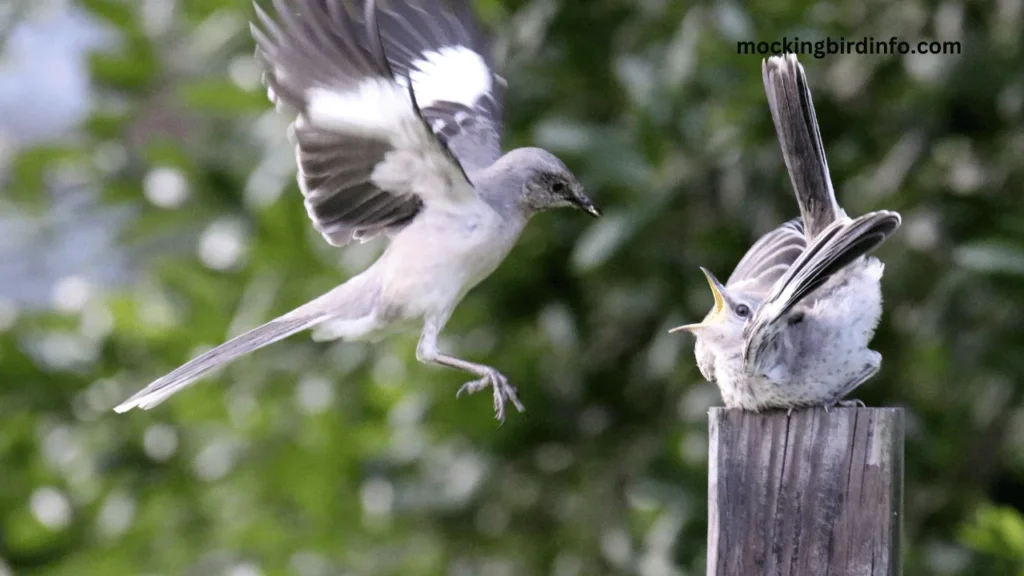Mockingbirds, with their clever mimicry and bold personalities, are undoubtedly fascinating creatures. But when they decide to take up residence in your yard, particularly during the breeding season, they can become a serious nuisance.
Imagine being woken up by a loud and persistent song at the crack of dawn or finding your garden overtaken by their relentless territorial displays. The challenges of dealing with these birds can leave anyone wondering how to handle the situation without resorting to harm.
In this article, we’ll explore humane and effective strategies to repel mockingbirds, ensuring that your space remains peaceful without disrupting the local wildlife.
While there’s no surefire way to completely remove mockingbirds from your property, there are several methods you can employ to make your environment less attractive to them. By understanding their behaviors and utilizing various non-lethal deterrents, you can reduce their presence without causing harm.
The goal isn’t to eliminate mockingbirds entirely, but to manage their behavior in a way that allows you to coexist peacefully.
In this article, we’ll discuss the intricacies of mockingbird behavior, explore different deterrent methods—both visual and auditory—and provide tips on creating an environment that will discourage them from settling in your yard.
We’ll also touch on the legal and ethical aspects of bird control, ensuring you stay within the boundaries of local wildlife regulations while protecting your property.

Contents
- 1 Understanding Mockingbird Behavior
- 2 Non-Lethal Deterrents
- 3 Creating an Inhospitable Environment
- 4 Legal and Ethical Considerations
- 5 Conclusion
- 6 FAQs
- 6.1 1. How do I stop mockingbirds from attacking my windows?
- 6.2 2. Do mockingbirds only become aggressive during breeding season?
- 6.3 3. Can I use poison to get rid of mockingbirds?
- 6.4 4. What are the best visual deterrents for mockingbirds?
- 6.5 5. Will pruning trees help repel mockingbirds?
- 6.6 6. Do ultrasonic devices work to repel mockingbirds?
Understanding Mockingbird Behavior
Territorial Behavior
Mockingbirds are famously territorial, especially during the breeding season. They will aggressively defend their chosen territory from any perceived intruders, including humans, pets, and other animals.
This often leads to loud, relentless singing, or even physical displays of aggression. Understanding this behavior is crucial when trying to manage their presence.
Attraction to Specific Stimuli
Mockingbirds are drawn to certain stimuli, such as shiny objects, water sources, and dense vegetation. They are naturally curious and may be attracted to reflective materials like aluminum foil or brightly colored items.
These elements can be particularly enticing to mockingbirds looking for new places to nest or forage.
Nesting Preferences
Mockingbirds prefer nesting in bushes and trees that offer good cover and high vantage points. Understanding where these birds are most likely to nest can help you identify areas on your property that may need extra attention.
Often, areas with dense shrubs or fruit-bearing trees become prime real estate for these birds.
Non-Lethal Deterrents
Visual Deterrents
Scarecrow: One of the oldest tricks in the book, scarecrows can be effective in deterring mockingbirds, but they have their limitations. Birds can become habituated to scarecrows over time, reducing their effectiveness.
Shiny Objects: Hanging old CDs, aluminum foil strips, or reflective materials in trees or near problem areas can deter birds. The reflective surfaces catch the light and confuse the birds, making the area seem threatening.
Predatory Decoys: Installing realistic-looking predator decoys, such as owls or hawks, can help make the area appear dangerous to the mockingbirds. These decoys often work best when moved regularly, as birds can recognize static objects as harmless after a while.
Auditory Deterrents
Distress Calls: Using recorded distress calls of other birds can trick mockingbirds into thinking a rival has claimed their territory. This can cause them to move on to more peaceful surroundings. However, these recordings must be played at the right frequency and time to be effective.
Ultrasonic Devices: Ultrasonic devices emit high-frequency sounds that are heard by birds but are inaudible to humans. These devices can be a good option for a more discreet deterrent, especially if you don’t want to create a disturbance for yourself or your neighbors.
Physical Barriers
Bird Netting: Installing bird netting around areas like fruit trees or vegetable gardens can physically block birds from accessing these locations. It’s a humane way to keep mockingbirds from raiding your garden without harming them.
Spikes: If mockingbirds are frequenting ledges, window sills, or railings, installing bird spikes can prevent them from perching. These spikes are designed to make surfaces uncomfortable to land on without causing any harm.
Creating an Inhospitable Environment
Removing Attractants
Mockingbirds are less likely to stay in an area if there are fewer attractive features. This means removing any bird feeders, standing water, or dense shrubs that could be attracting them. Without these resources, they may choose to relocate to a more suitable location.
Pruning and Trimming
Pruning your trees and shrubs regularly can make it more difficult for mockingbirds to find suitable nesting sites. Focus on trimming dense branches and keeping bushes neat, so they don’t provide cover for nesting or perching.
Using Repellents
There are also commercial bird repellents available, such as those containing methyl anthranilate. This chemical compound makes the area taste unpleasant to the birds, encouraging them to fly elsewhere. Always use non-toxic options to ensure no harm is done to the birds.

Legal and Ethical Considerations
Local Regulations
Before taking action, it’s important to check your local laws regarding wildlife control. Some regions have specific regulations protecting birds, including mockingbirds, under laws like the Migratory Bird Treaty Act. Always ensure that any deterrents you use comply with these laws.
Humane Treatment
It’s essential to use methods that do not harm or injure mockingbirds. Humane bird control focuses on creating an environment that is unwelcoming to the birds without causing them physical harm. The goal should always be to deter, not to hurt.
Conclusion
To effectively repel mockingbirds from your property, understanding their behaviors and utilizing a combination of visual, auditory, and physical deterrents is key. While these birds can be persistent, the use of non-lethal methods ensures that both you and the mockingbirds can coexist peacefully.
By creating an inhospitable environment and removing attractants, you can discourage these clever creatures from making your home their own. Ultimately, finding a balance between human needs and wildlife conservation is essential.
While it can be frustrating to deal with aggressive birds, the right approach allows for peaceful coexistence. By respecting nature and using humane tactics, we can ensure that both people and birds thrive in shared spaces.
FAQs
1. How do I stop mockingbirds from attacking my windows?
Mockingbirds are territorial, so they may attack their reflection. Try covering the window with a non-reflective material or using bird decals to prevent this behavior.
2. Do mockingbirds only become aggressive during breeding season?
Yes, mockingbirds are typically more aggressive during breeding season as they defend their nests and territory.
3. Can I use poison to get rid of mockingbirds?
It is illegal and unethical to use poison on mockingbirds. Always opt for humane, non-lethal methods.
4. What are the best visual deterrents for mockingbirds?
Shiny objects, scarecrows, and predator decoys are some of the most effective visual deterrents.
5. Will pruning trees help repel mockingbirds?
Yes, pruning trees can make your property less attractive to mockingbirds by reducing nesting opportunities.
6. Do ultrasonic devices work to repel mockingbirds?
Ultrasonic devices can deter mockingbirds by emitting high-frequency sounds that are unpleasant to them but inaudible to humans.








